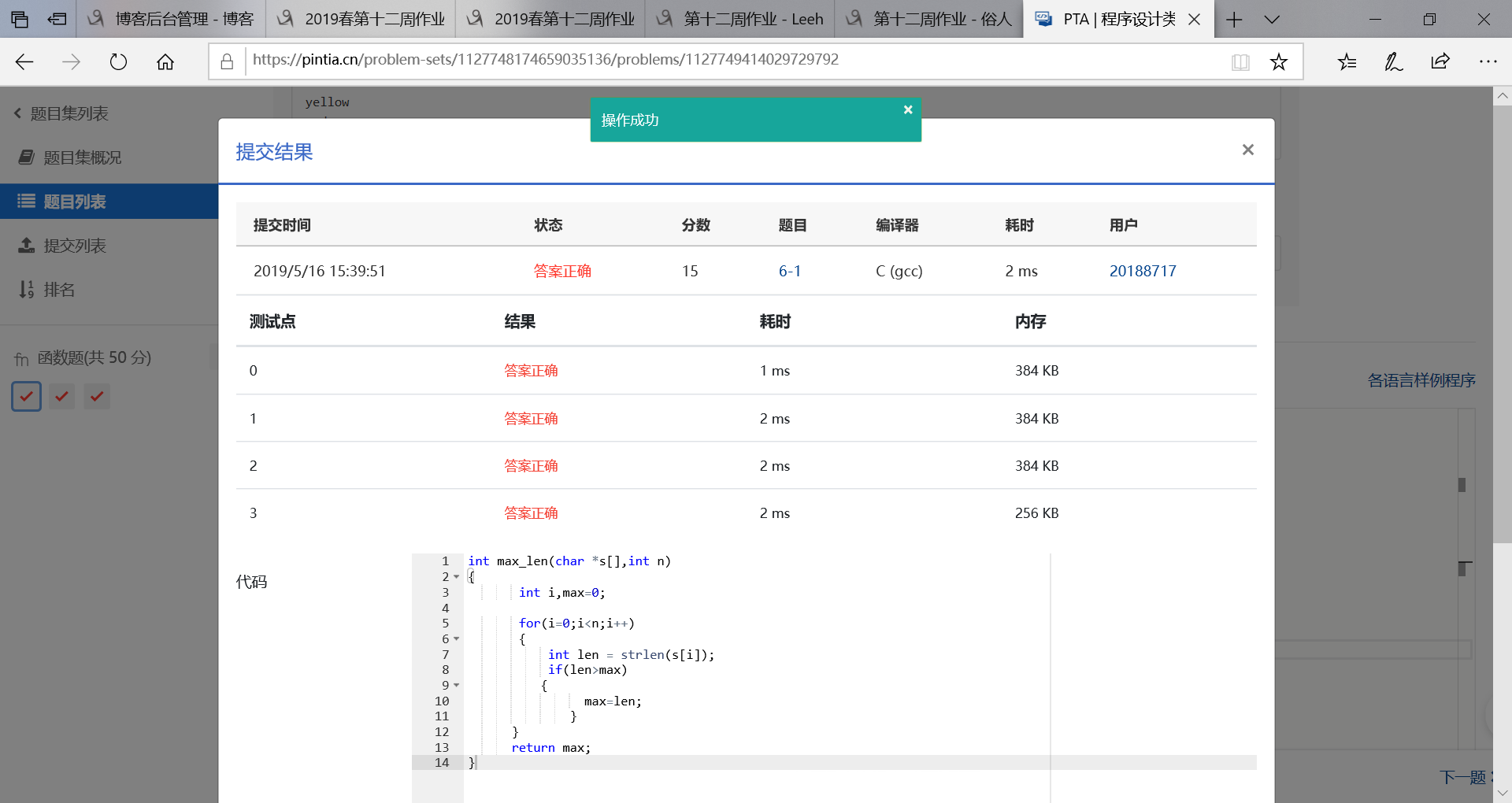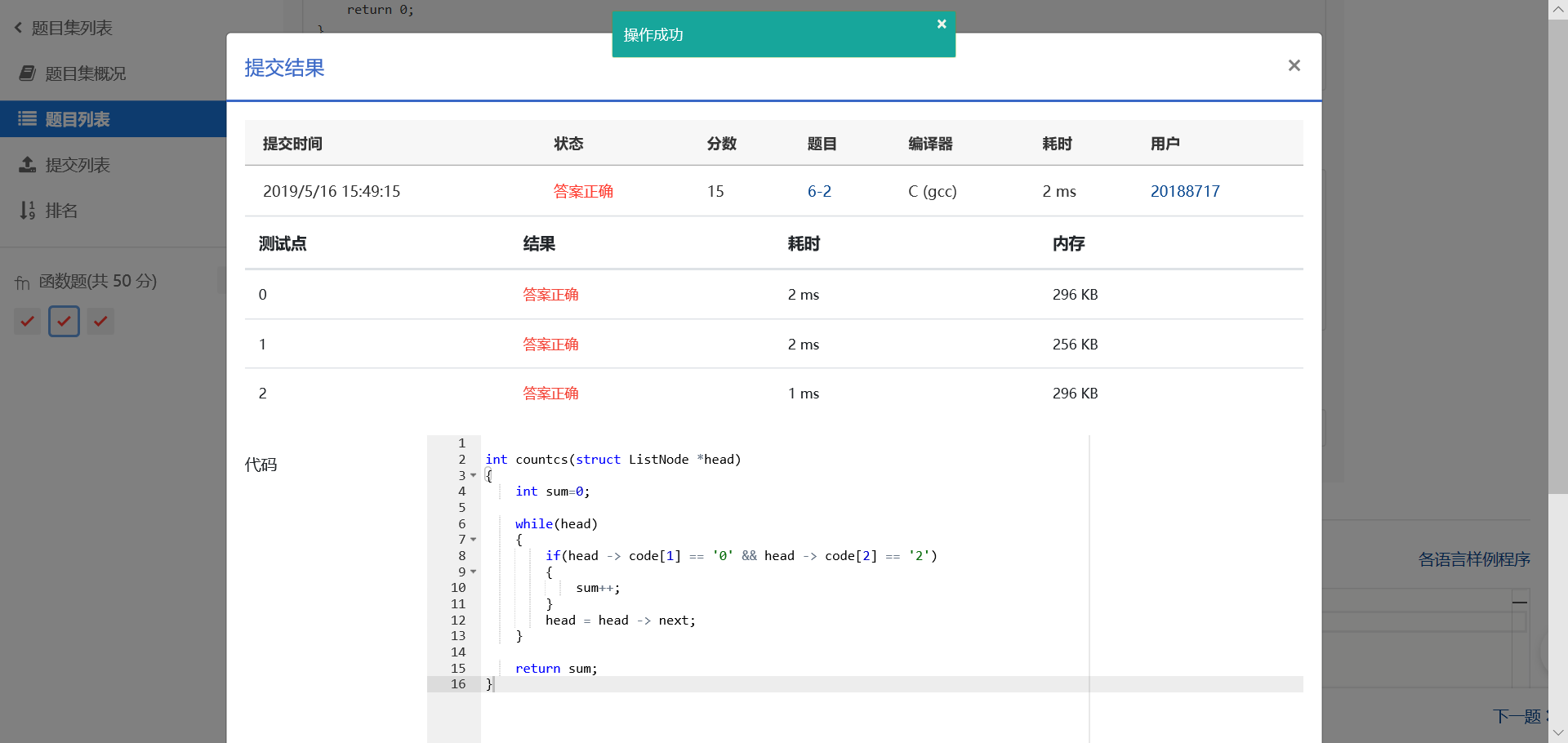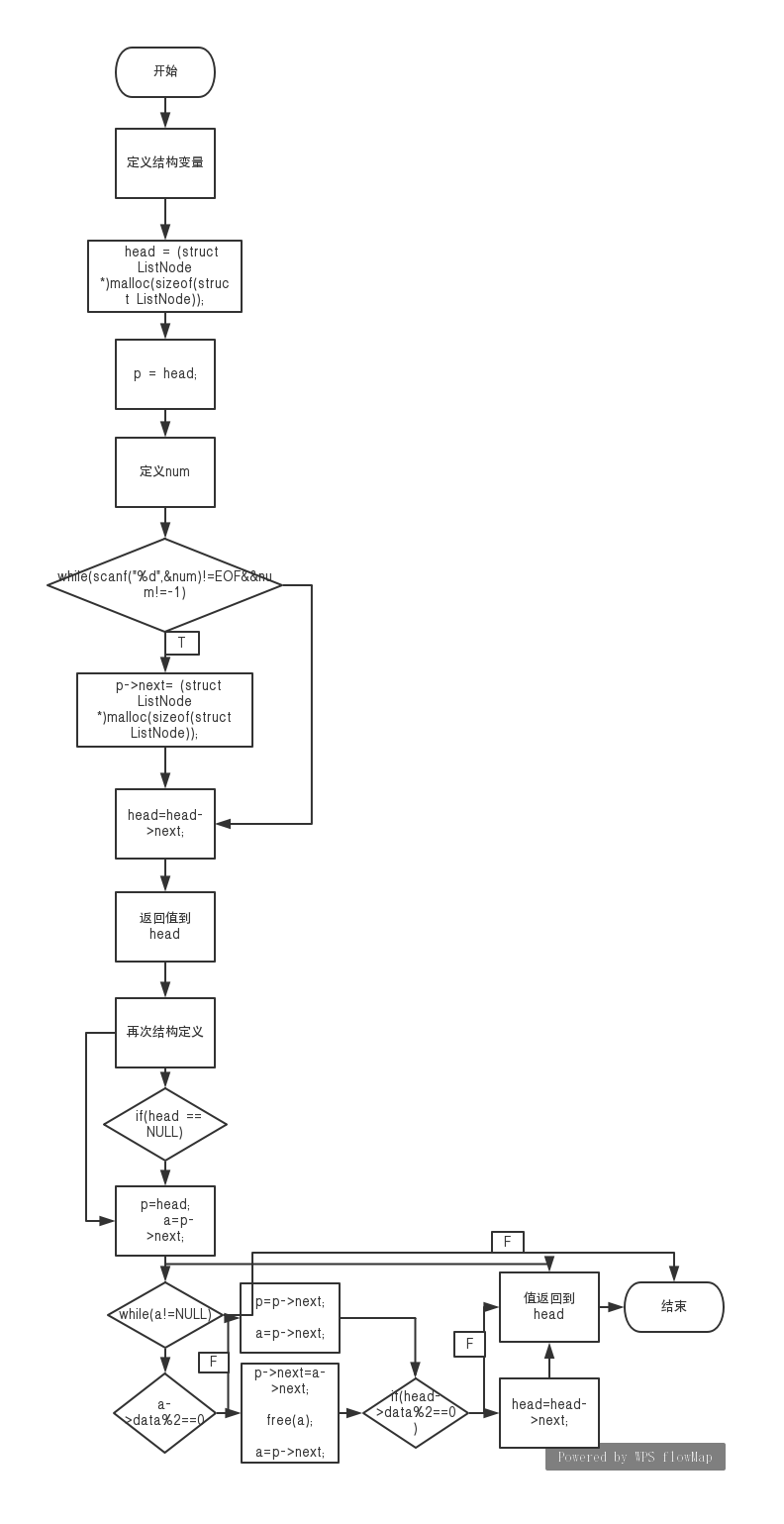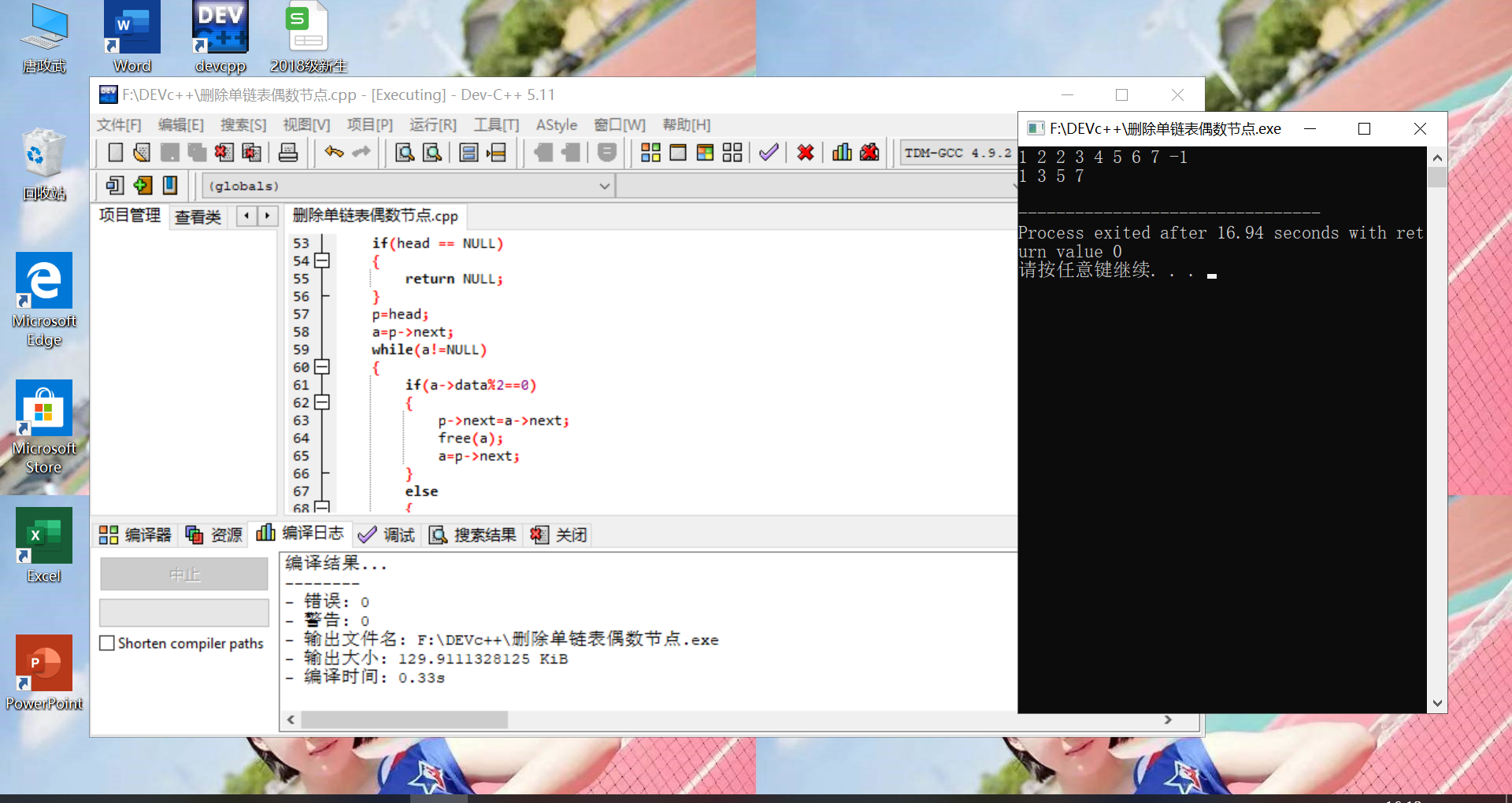| 这个题属于哪个课程 | C语言程序设计II |
|---|---|
| 这个作业要求在哪里 | https://edu.cnblogs.com/campus/zswxy/software-engineering-class2-2018/homework/3234 |
| 我在这个课程的目标是 | 复习运用指针数组,数组指针 |
| 这个作业在哪个具体方面帮助我实现目标 | 视频 |
| 参考文献 | C语言程序设计 |
基础题
本题要求实现一个函数,用于计算有n个元素的指针数组s中最长的字符串的长度。
函数接口定义:
int max_len( char *s[], int n );
其中n个字符串存储在s[]中,函数max_len应返回其中最长字符串的长度。
裁判测试程序样例:
#include <stdio.h>
#include <string.h>
#include <stdlib.h>
#define MAXN 10
#define MAXS 20
int max_len( char *s[], int n );
int main()
{
int i, n;
char *string[MAXN] = {NULL};
scanf("%d", &n);
for(i = 0; i < n; i++) {
string[i] = (char *)malloc(sizeof(char)*MAXS);
scanf("%s", string[i]);
}
printf("%d
", max_len(string, n));
return 0;
}
/* 你的代码将被嵌在这里 */
输入样例:
4 blue yellow red green
输出样例:
6
1.实验完整代码:
#include <stdio.h>
#include <string.h>
#include <stdlib.h>
#define MAXN 10
#define MAXS 20
int max_len( char *s[], int n );
int main()
{
int i, n;
char *string[MAXN] = {NULL};
scanf("%d", &n);
for(i = 0; i < n; i++) {
string[i] = (char *)malloc(sizeof(char)*MAXS);
scanf("%s", string[i]);
}
printf("%d
", max_len(string, n));
return 0;
}
/* 你的代码将被嵌在这里 */
int max_len(char *s[],int n)
{
int i,max=0;
for(i=0;i<n;i++)
{
int len = strlen(s[i]);
if(len>max)
{
max=len;
}
}
return max;
}
2、设计思路:

3、遇到的问题及解决办法:
本题五
4、运行结果截图:

本题要求实现一个函数,统计学生学号链表中专业为计算机的学生人数。链表结点定义如下:
struct ListNode {
char code[8];
struct ListNode *next;
};
这里学生的学号共7位数字,其中第2、3位是专业编号。计算机专业的编号为02。
函数接口定义:
int countcs( struct ListNode *head );
其中head是用户传入的学生学号链表的头指针;函数countcs统计并返回head链表中专业为计算机的学生人数。
裁判测试程序样例:
#include <stdio.h>
#include <stdlib.h>
#include <string.h>
struct ListNode {
char code[8];
struct ListNode *next;
};
struct ListNode *createlist(); /*裁判实现,细节不表*/
int countcs( struct ListNode *head );
int main()
{
struct ListNode *head;
head = createlist();
printf("%d
", countcs(head));
return 0;
}
/* 你的代码将被嵌在这里 */
输入样例:
1021202 2022310 8102134 1030912 3110203 4021205 #
输出样例:
3
1、实验代码:
#include <stdio.h>
#include <stdlib.h>
#include <string.h>
struct ListNode {
char code[8];
struct ListNode *next;
};
struct ListNode *createlist(); /*裁判实现,细节不表*/
int countcs( struct ListNode *head );
int main()
{
struct ListNode *head;
head = createlist();
printf("%d
", countcs(head));
return 0;
}
/* 你的代码将被嵌在这里 */
int countcs(struct ListNode *head)
{
int sum=0;
while(head)
{
if(head -> code[1] == '0' && head -> code[2] == '2')
{
sum++;
}
head = head -> next;
}
return sum;
}
2、设计思路:

3、遇到的问题及解决办法:
刚开始的while语句写错了 后来改正
4、运行结果截图:
本题要求实现两个函数,分别将读入的数据存储为单链表、将链表中偶数值的结点删除。链表结点定义如下:
struct ListNode {
int data;
struct ListNode *next;
};
函数接口定义:
struct ListNode *createlist(); struct ListNode *deleteeven( struct ListNode *head );
函数createlist从标准输入读入一系列正整数,按照读入顺序建立单链表。当读到−1时表示输入结束,函数应返回指向单链表头结点的指针。
函数deleteeven将单链表head中偶数值的结点删除,返回结果链表的头指针。
裁判测试程序样例:
#include <stdio.h>
#include <stdlib.h>
struct ListNode {
int data;
struct ListNode *next;
};
struct ListNode *createlist();
struct ListNode *deleteeven( struct ListNode *head );
void printlist( struct ListNode *head )
{
struct ListNode *p = head;
while (p) {
printf("%d ", p->data);
p = p->next;
}
printf("
");
}
int main()
{
struct ListNode *head;
head = createlist();
head = deleteeven(head);
printlist(head);
return 0;
}
/* 你的代码将被嵌在这里 */
输入样例:
1 2 2 3 4 5 6 7 -1
输出样例:
1 3 5 7
1、实验代码:
#include <stdio.h>
#include <stdlib.h>
struct ListNode {
int data;
struct ListNode *next;
};
struct ListNode *createlist();
struct ListNode *deleteeven( struct ListNode *head );
void printlist( struct ListNode *head )
{
struct ListNode *p = head;
while (p) {
printf("%d ", p->data);
p = p->next;
}
printf("
");
}
int main()
{
struct ListNode *head;
head = createlist();
head = deleteeven(head);
printlist(head);
return 0;
}
/* 你的代码将被嵌在这里 */
struct ListNode *createlist()
{
struct ListNode *head,*p;
head = (struct ListNode *)malloc(sizeof(struct ListNode));
p = head;
head->next=NULL; //指向运算符->
int num;
while(scanf("%d",&num)!=EOF&&num!=-1)
{
p->next= (struct ListNode *)malloc(sizeof(struct ListNode));
p=p->next;
p-> data=num;
p->next=NULL;
}
head=head->next;
return (head);
}
struct ListNode *deleteeven(struct ListNode *head)
{
struct ListNode *p,*a;
if(head == NULL)
{
return NULL;
}
p=head;
a=p->next;
while(a!=NULL)
{
if(a->data%2==0)
{
p->next=a->next;
free(a);
a=p->next;
}
else
{
p=p->next;
a=p->next;
}
}
if(head->data%2==0)
{
head=head->next;
}
return(head);
}
2、设计思路:

3、遇到的问题及解决办法:
这题就我自己而言有点复杂,所以是在同学的帮助下完成的。
4、运行结果截图:

学习感悟:
这周学习了指针进阶,对于我来说,连前面知识都还没搞懂的人来说, 这一章就不用说什么了,听的很迷,很想睡觉,所以现在的目标就是把前面所学的赶紧复习完,怎么说呢,落后了就慢慢赶吧,加油!
结对编程感悟:
这周的基础题前两题还好,没什么好交流的,就是在第三题,我们遇到了一点困难,分工合作,上网查资料、想大佬求助,最终还是完成了这个题目,Good。
预习作业
1.所在小组想要开发的项目的名称和目标;
2.项目主体功能的描述;
3.现阶段已做的准备工作;
4.小组成员名单和进度安排。(课程设计阶段:13-17周)
小组成员:唐文凯,唐政武,雷云
学习进度条:
| 周/日期 | 这周所花时间 | 代码行数 | 学到的知识点 | 目前比较疑惑的问题 | |
| 3.29--4.4 | 5h | 50行 | 理解变量,内存和地址之间的关系 | 关系模糊 | |
| 4.4--4.11 | 5h | 62行 | 指针、数组和地址之间的关系 |
+1 |
|
| 4.11--4.19 | 6h | 78行 | 字符串和字符指针 | 指针的内存动态分配 | |
| 4.20--4.26 | 6h | 80行 | 结构体 | 结构体的具体实质 | |
| 4.27--5.2 |
4h |
54行 | 复习 | ||
| 5.3--5.10 |
6h |
92行 | 递归函数 |
递归函数 |
|
| 5.11--5.16 |
5h |
105行 | 指针进阶 |
指针进阶 |